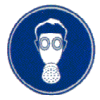We were in the aerosol filling business for twenty years and visited a customer who wanted to retire. Since I no longer wanted to commute for 3 hours a day, we decided to buy the company and move it closer to home.
We sold Spider-Not for over 25 years through Home Trends Catalog. Unfortunately, they closed their doors in 2016. For years we have been getting calls from their customers. Everyone loved Spider-Not and wanted to buy some.






